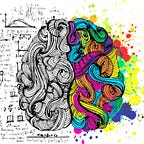China Challenges Google’s Quantum Breakthrough
The method of simulating quantum computations by Chinese scientists can re-perform Google’s test in 5 days.
The field of quantum computing is still in its infancy, but promises to elevate the computing power of humans to a new level by controlling subatomic particles. Scientists hope it will be the foundation for breakthroughs in fields such as new drug-making and materials science.
This is also one of the Chinese government’s top development priorities. Last week, the country adopted its 14th five-year development plan, focusing on key science and technology industries, especially applications such as ultra-secure communication networks and precise measurement.
“Quantum advantage” is a developmental milestone, marking the difference in computational power between quantum machines and classical computers.
In October 2019, Google announced its Sycamore processor was the first quantum computer to achieve quantum advantage by solving a task in 3 minutes and 20 seconds, which is the world’s most powerful supercomputer IBM Summit. it took 10,000 years to complete.
